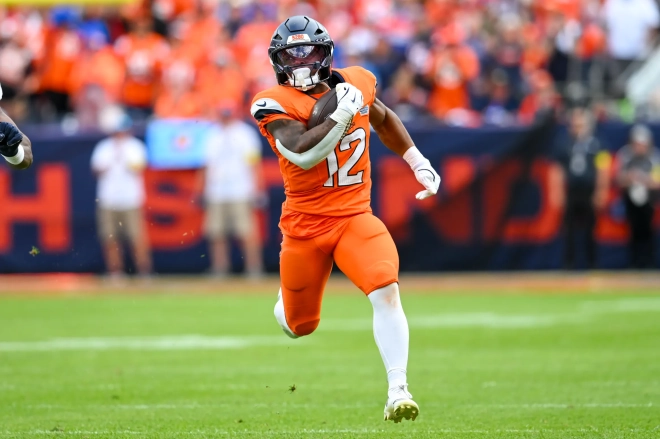The seismic shift in how we value fantasy performers began slowly in 2004 when defensive pass interference rules were altered, making it more difficult for defensive backs to cover wide receivers beyond five yards of the line of scrimmage. The NFL didn’t become “a passing league” until 2008 when nearly 20 QB’s threw for 3,000 yards. It used to be a rare (historic) occasion when a signal caller eclipsed the 4,000-yard plateau, however, six signal callers managed the feat that season (with Drew Brees throwing for over 5,000 yards).
Now, nearly seven years later, it’s so easy, even a caveman can do it. 11 men with green dots on their helmets threw for 4,000 yards last year, while 22 managed to eclipse 3,000 yards. Just because every quarterback in a 12-team standard league is putting up monster numbers, doesn’t mean quarterbacks are worth less. They haven’t been de-valued so to speak, it’s just that the gap between the truly elite tier comprised of Aaron Rodgers and Andrew Luck and the last starter off the board (likely either Tom Brady or Tony Romo, according to MyFantasyLeague.com current average draft position data) isn’t wide enough to justify taking Luck or Rodgers in the first round as your fantasy QB.
Both Luck and Rodgers averaged over 21 points per game last season. Philip Rivers, who finished 12th in total points, averaged just under 16 points per game. Granted there are wild fluctuations in player performance on a week-to-week basis depending on matchups, etc. but over the course of a full-season, that gap isn’t substantial enough to justify a huge investment of draft capital. The gap gets even smaller if you look at the difference between Russell Wilson, who ranked third in total points last season, averaging 19.5 points per game. That’s less than four points per game, which is nothing.
Who would you rather have? Andrew Luck or Aaron Rodgers in the first round or Tom Brady or Tony Romo in the ninth round, where they are currently going off the board in terms of ADP. It’s not that Luck and Rodgers aren’t incredible, because they are, but passing up on an elite talent at running back, wide receiver, (or Gronk for that matter) where the divide between the truly elite options and the bottom of the barrel starting options is wider than the grand canyon, it makes more sense to pass on a quarterback in the first round. It’s not “recency bias” either; it’s a trend, which has steadily been developing over the past decade.
The divide between the third and 12th quarterback selected is likely to be less than four points per game. Therefore, I want to be the last person to take a quarterback in the draft. When guys like Eli Manning, who finished as a top-10 quarterback last season, and Colin Kaepernick are going undrafted in standard 12-team leagues, there’s a legitimate case to be made, given the options on the waiver wire, for opting to stream the position based on matchups every week.
If you don’t see my argument still, here are a couple of mock draft scenarios using MyFantasyLeague.com’s up to date average draft position data:
Team A: Aaron Rodgers/Andrew Luck & Devonta Freeman/Kenny Stills
Team B: Jamaal Charles/Calvin Johnson & Tom Brady/Tony Romo
For me, it’s not close. If it’s all about extracting the most value on draft day, option to pass on Luck or Rodgers is an easy call when you really think about it.
The Machine projects Luck and Rodgers for approximately 24 and 23 points per game, respectively. Drew Brees, who grades out third in the systems projections, is forecasted for 21 points per game. Meanwhile, Tony Romo and Matthew Stafford, who rank 11th and 12th in projected points are expected to produce 19 points per game. While there is a gap between Luck, Rodgers and the field, it just isn't insurmountable and The Machine agrees.
Stay tuned to ASL fantasy news for the latest in QB news.




